A Look at the Pirates' "Other" 2023 Pitching Draftees
You've heard plenty about Paul Skenes, but there were other guys . . . .
For the second year in a row, the Pirates focused their draft heavily on college pitchers. The headliner, of course, was first overall pick Paul Skenes. There were a dozen more after him, though, making up 60% of the picks the Pirates signed from the draft. (Numbers in parentheses are draft rounds.)
This is a quick summary of what we’ve seen so far from the “other guys.” That’s the ones who actually pitched . . . several didn’t. One of those was was Zander Mueth (2), the only prep pitcher the Pirates drafted and one of only two prep players they signed. Of the college pitchers, Hunter Furtado (6), Austin Strickland (8) and Khristian Curtis (12) have yet to take the mound as pros. The rest will have finished their seasons by the time you read this, or will be within a few hours of doing so. All stats herein are up to date through games of September 8.
A few things first. One is the Pirates’ draft strategy. With college pitchers, they seem to try to find some sort of edge one way or another. A number of factors seem to drive their draft selections:
High-spin breaking balls, or for that matter breaking balls generally
Good performance in summer ball
Pitchers coming back from injuries
Pitchers from obscure schools (e.g., Salve Regina University)
You could view this as an effort to find hidden upside, but that might be a stretch; of the college pitchers in the team’s 2023 draft, Skenes may be the only one who projects as a starter.
You’re also going to notice that not many of these guys pitched well in their first exposure to pro ball. If that doesn’t sound concerning, it should. None of these pitchers appeared above low class A and some only in the FCL. The average player in the Florida State League is undoubtedly more talented than what you find in the NCAA, but he’s also less experienced. That’s doubly true since MLB eliminated the two levels in between the complex leagues and low A, which has led Baseball America to note a number of times that scouts say the quality of play has been much lower than it was before the downsizing. At this level, the difference in experience matters a lot. That’s why you see the phenomenon of the college hitter with a huge walk total in low A. Check out what happened when Josiah Sightler went from Bradenton to Greensboro to get an idea.
Anyway, here’s a rundown on the “other” college pitchers so far, among the ones who’ve seen action:
Carlson Reed (4): Reed was a swing man for two years at West Virginia, then pitched a lot better after moving to relief as a junior. He reportedly sat at 94-95 mph in college and his frame suggests some projection. He also throws a lot of sliders and a change. Reed got into four games in the FCL, covering seven innings. He gave up seven hits and three walks, and allowed only two earned runs, but he also allowed five unearned runs. Reed fanned six.
Patrick Reilly (5) (pictured at top): Apart from Skenes, Reilly is probably the hardest thrower among the college draftees. His sinker and 4-seamer both sit around 96 mph in some games, 92-94 in others. He also throws a cutter and slider. (As always, caution is warranted with Statcast pitch classifications.) Reilly got into eight games for Bradenton and mostly pitched well. His first game was bad — three runs in two-thirds of an inning — and he had one other bad outing that left him with a 6.75 ERA. His WHIP, while not great, wasn’t awful at 1.39, and he walked eight in 9.1 IP. The good news is that he fanned 17, nearly two per inning.
Jaden Woods (7): The lefty Woods had the best debut of the new guys. He got into nine games, all for Bradenton, and threw 13.1 IP. He walked only three, a virtual miracle for a Pirates’ draftee, and allowed ten hits while fanning 21. Woods was mostly a reliever in college until he became a starter as a junior. He throws about 89-92, and adds a slider and change. He had high K rates in college and the change is missing a lot of bats in the minors, according to Statcast.
Danny Carrion (9): A reliever at UC Davis, Carrion throws a cutter and 4-seamer, both of which sit around 89-92. He also throws a slider and curve. Carrion had a good senior year after a very bad junior year, and also pitched well in summer ball. He got into five games for Bradenton and had a rough time, giving up ten hits and five walks in five innings. That left him with a 16.20 ERA and 3.0 WHIP.
Landon Tomkins (10): The Pirates drafted Tomkins as a fifth-year senior. He signed well under slot, so the Pirates saved some bonus pool money that they didn’t spend. He throws 90-93 with a slider and cutter. Tomkins got into 11 games and threw 16 innings for Bradenton. He gave up 17 hits and eight walks, for a 1.56 WHIP and 4.50 ERA. He struck out only six.
Magdiel Cotto (11): Cotto is a big lefty who had significant control problems in college. He showed some improvement in summer ball in 2022, but walks were still a big problem in 2023 at Kentucky. Cotto supposedly sat at 93 in college, but he’s been more at 91-93 as a pro. I think there are some Statcast issues at play. In his two games at Fort Myers, he supposedly threw lots of changeups at about the same velocity as his fastball. In his one game at LECOM, he didn’t throw any changeups. He does throw a slider. Cotto allowed no runs in three innings in the FCL, with no walks and three strikeouts. In three games for Bradenton, he gave up two hits, two runs and three walks in 3.1 IP, with four strikeouts.
Garrett McMillan (14): The Pirates drafted McMillan as a senior from Alabama, where he started for two years. He seems to have been a finesse guy. He got into one FCL game and retired only one batter, allowing three hits and two runs.
Tyler Kennedy (19): Kennedy started his college career at Pitt, but struggled badly with the strike zone and transferred to a junior college in Florida. He throws hard with a lot of movement, but the control is really bad. Kennedy appeared in five FCL games and got through a full inning only once. In his last outing he retired nobody. In three innings total, he gave up five hits and nine walks, and fanned seven.
Peyton Stumbo (20): Another guy I don’t know much about. Stumbo was a swing man at Nevada for four years and generally had pretty good control and low K rates, and got hit around some, with a career ERA of 6.20. He got into five FCL games and allowed just one run and four hits over 6.1 IP. He walked nobody and fanned three.

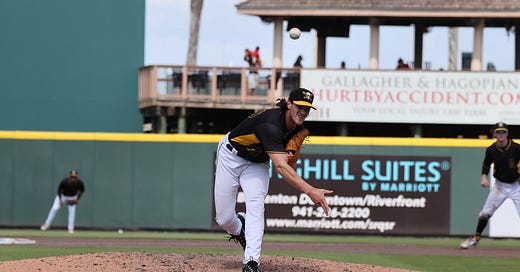



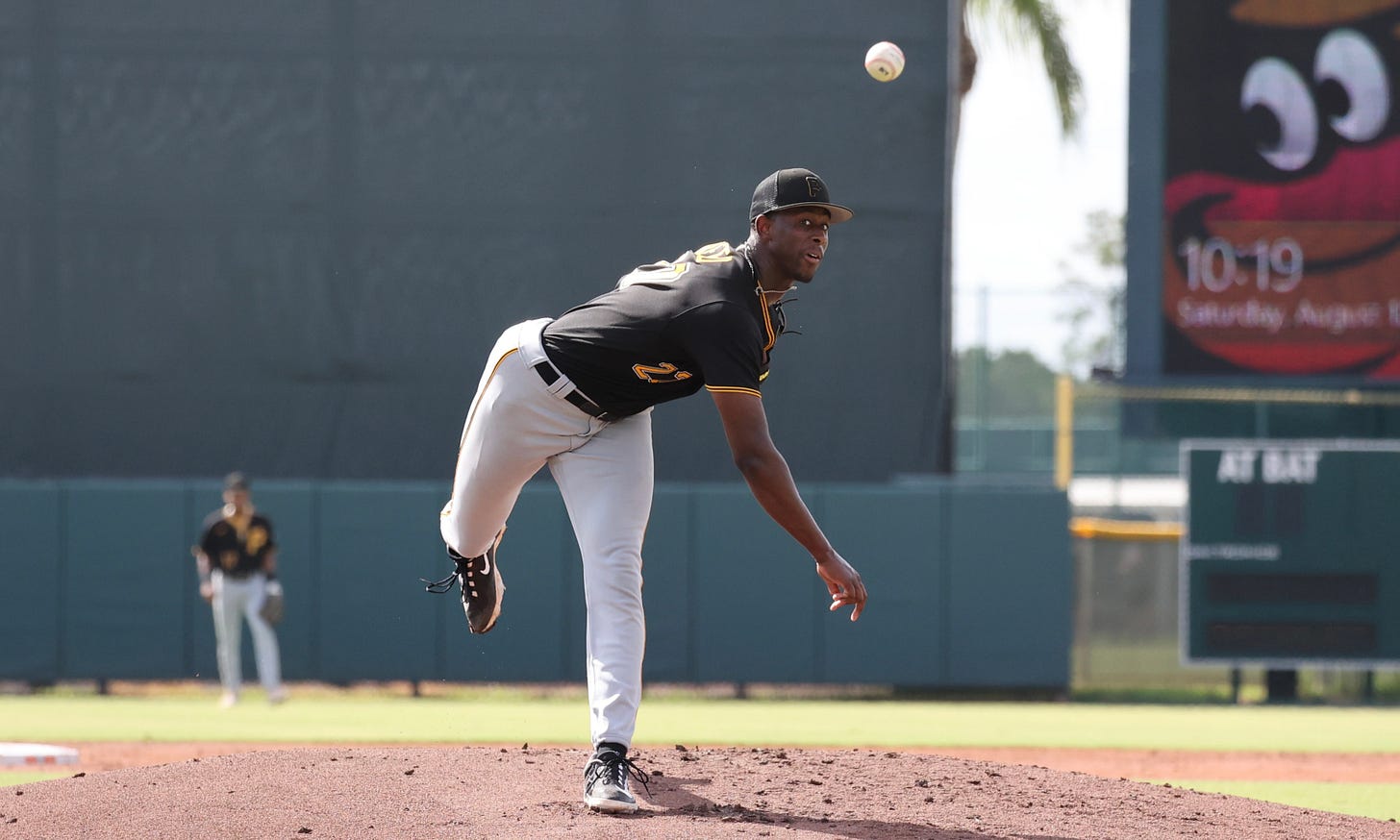

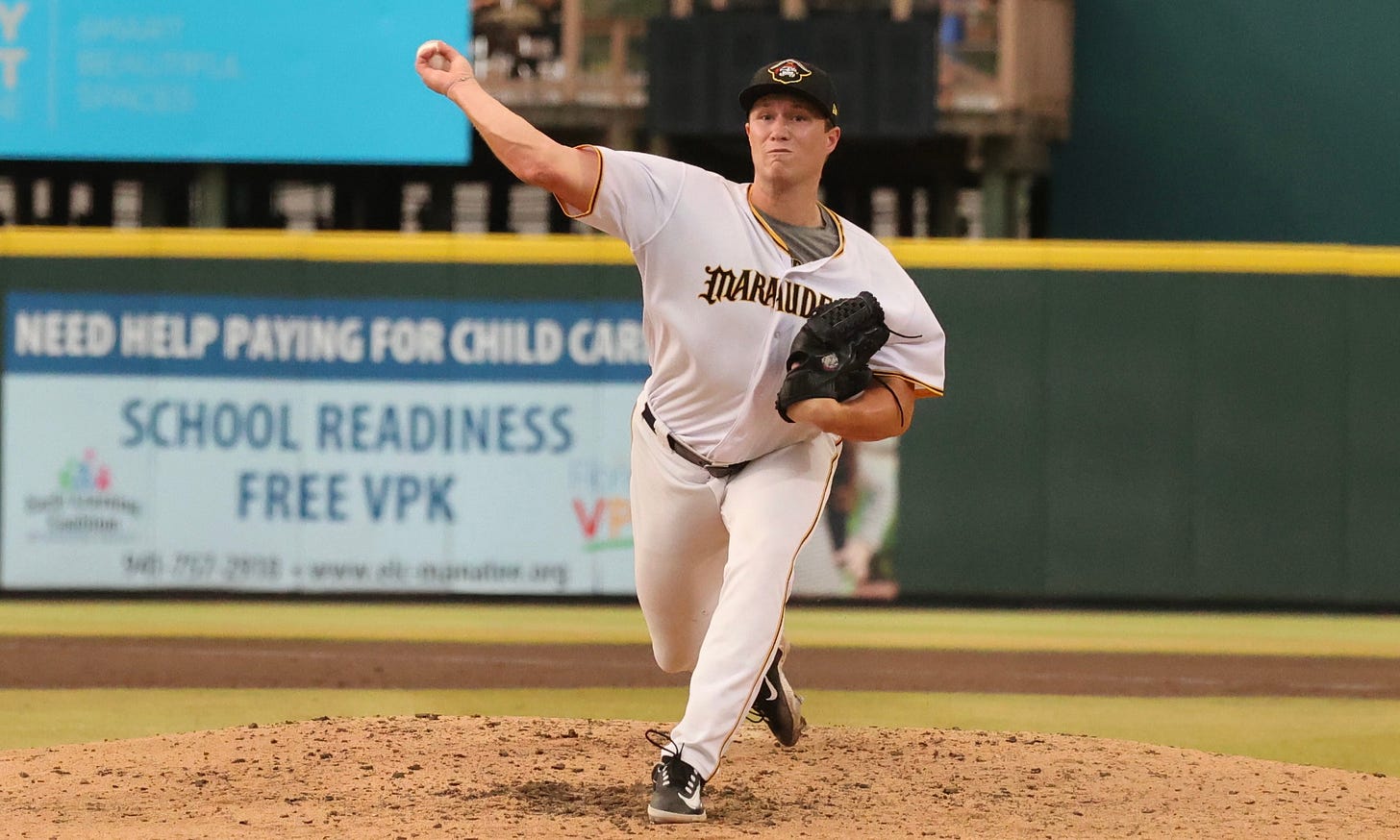
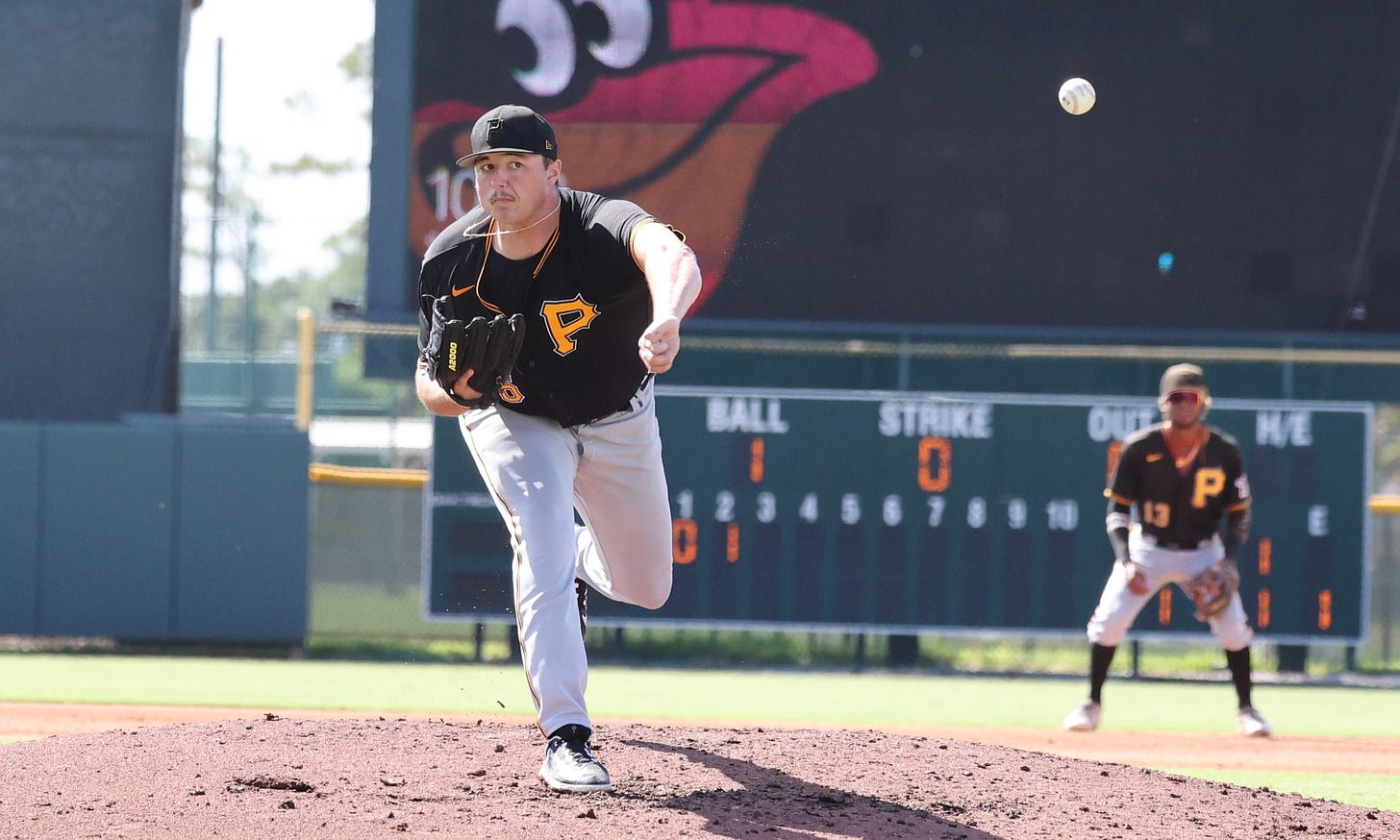
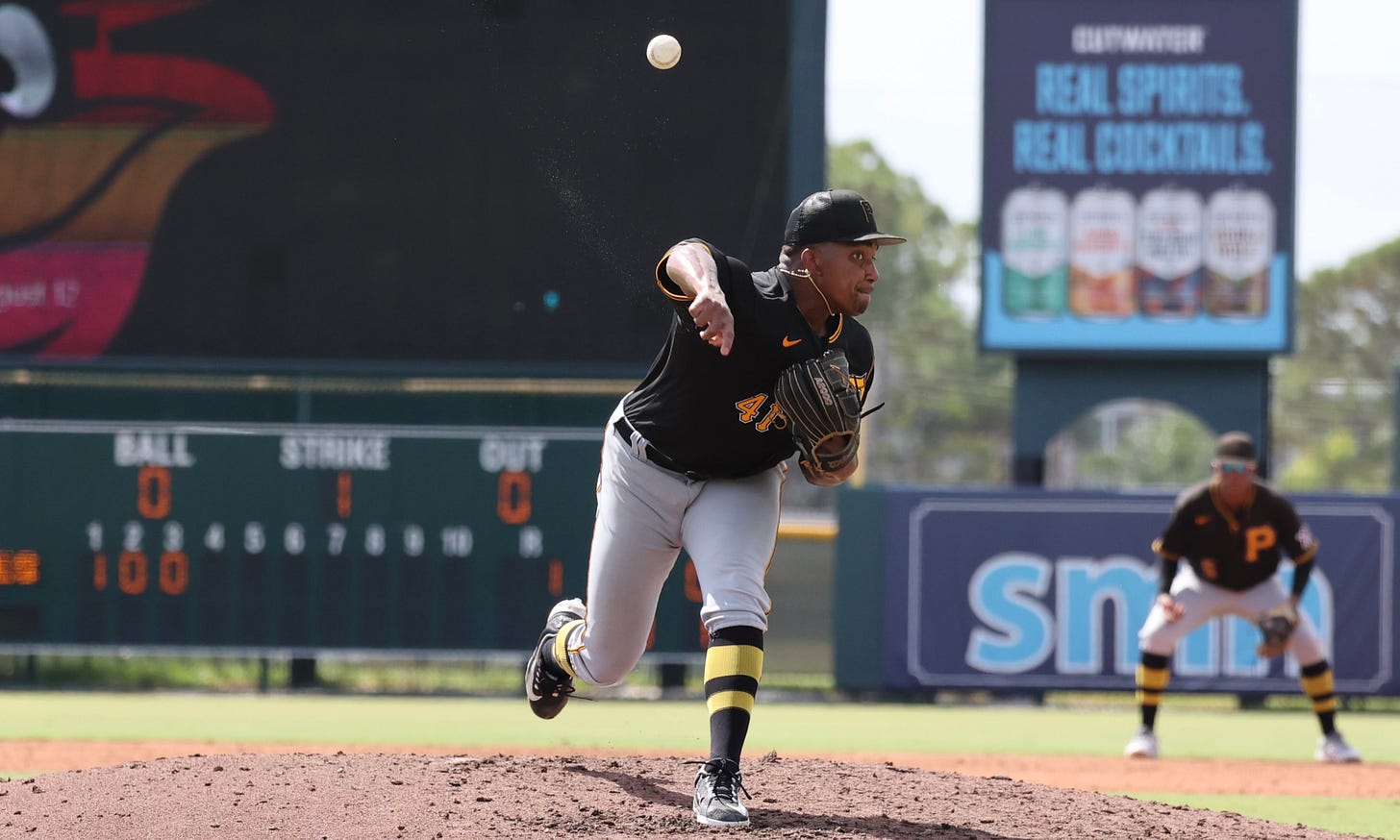
So you're looking for guys with 90s velocity who've pitched a bit with a little bit of guidance and have SOMETHING to recommend them, no matter how much of a reach. Given a chance and a dollop of quality instruction, you're looking for something to click.
I love the Tyler Kennedy line: three innings, five hits, nine walks, seven strike-outs.
Makes the Paul Skenses of the world stand out as the freaks they are.
-Wabbit
Great pics here WTM! And also a great writeup! Though I do wish that there was more positive aspects to write about!